I was driving the other day on a back road, winding my way out toward the ocean, and I saw something I’ve seen many times before. But on that day, it didn’t feel familiar at all: As I came over a small rise in the road I saw a stand of maple trees, their bark smooth and pale, branches long and slender, reaching out over the road, and their leaves beginning to transition from the rich green of summer to the buttery yellows they will wear through the fall.
What a crazy thing, I thought. In one day, almost overnight it seems, the leaves are suddenly a bright new color. This is wild!
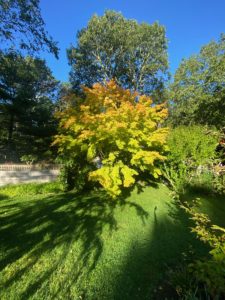
Normally, we accept this as a given. Of course the leaves change color. They always have. Why wouldn’t they? But pause for a moment. If you were to arrive here on this planet from somewhere else in, say, late June, you would see a world of green foliage. A few short months later, after just a couple of cool nights, the entire landscape shifts into a fiery explosion of a million multi-colored leaves. “I have arrived in the coolest place in the universe,” you might think. And you might be right.
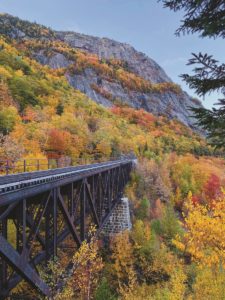
If you drive north and inland today, up through the valleys and mountains of New Hampshire, Vermont, and Maine, you will see this tie-dye landscape at its loudest. Entire hillsides will look like a kindergarten class was given a thousand tubes of paint and invited to run free and make something beautiful. The result: an abstract masterpiece in pointillism. A friend sent me a picture last week taken on a hike in a New Hampshire forest, showing off a full spectrum of reds, some with an apex of deep orange, or fading down to a rich yellow. There are shocking purples here and there. Sometimes a single leaf will express the rainbow’s variety. It is an uproar of chromatic celebration.
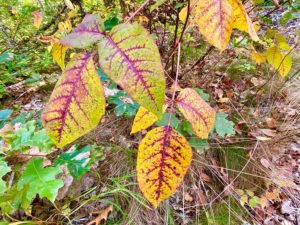
We do not get the intensity of the hardwood forests here on the Cape. We do have our moment, though. Look closely and our colors show in the glistening reds of the poison ivy and the muted ones of the blueberry understory, the tans of marsh grasses, and the swamp maples in reds, oranges, and yellows. Virginia creeper will flush in blazing pink, and the deep, rich, glossy purples of the tupelos will ring the ponds. We can see it in the privets, whose leaves go dark, just the leaf tips dipped in gold. And our ashes, walnuts, and locusts seem to become physically lighter as they shift to the color of spring honey. A walk in the woods will be spiced with little pockets of brightness, each bend in the path offering a new tone or shade that asks to be seen.
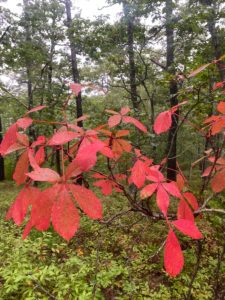
What gives us this way to witness the movement of the season?
With less light available, and air and soil temperatures dipping, the tree is signaled to prepare for dormancy. Chlorophyll, the compound responsible for photosynthesis and for the green color of leaves, begins to break down. The tree dismantles it into its nutrient components and draws them back into its body, into the trunk and roots, to be stored as a resource for future growth.
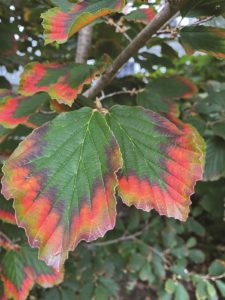
As the green pigments go, the yellows, oranges, and reds are revealed. Xanthophylls are responsible for yellows, carotenoids for oranges, and anthocyanins for the reds. These pigments are always present in the leaves, but chlorophyll, being the dominant compound, masks the others. It is only when the most forward color fades that we see this beauty within.
It’s satisfying to think that the forest always has these colors held deep in its cells. They are like the true substance of one’s character, beneath the outer persona, that comes through when called by a challenge.



